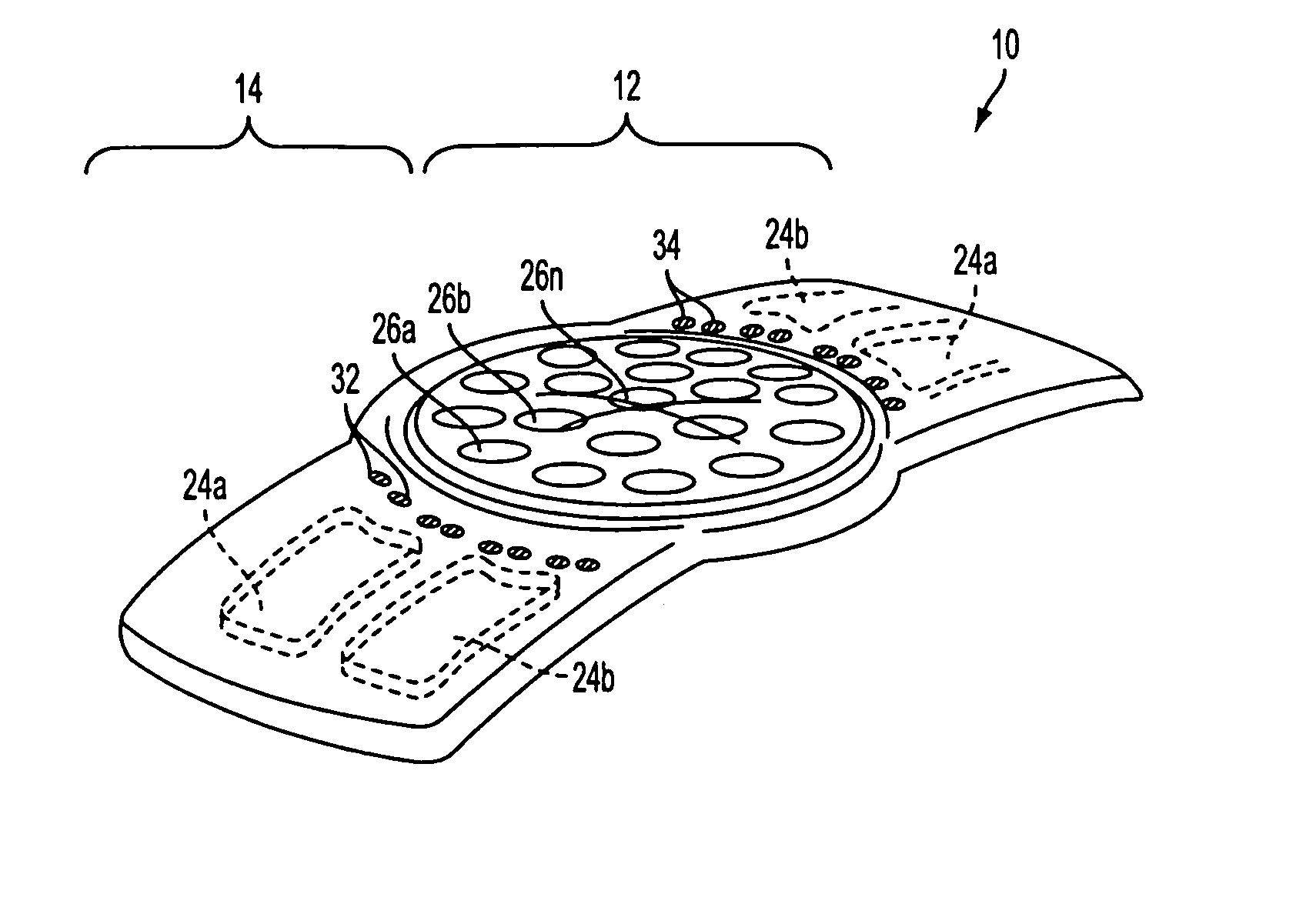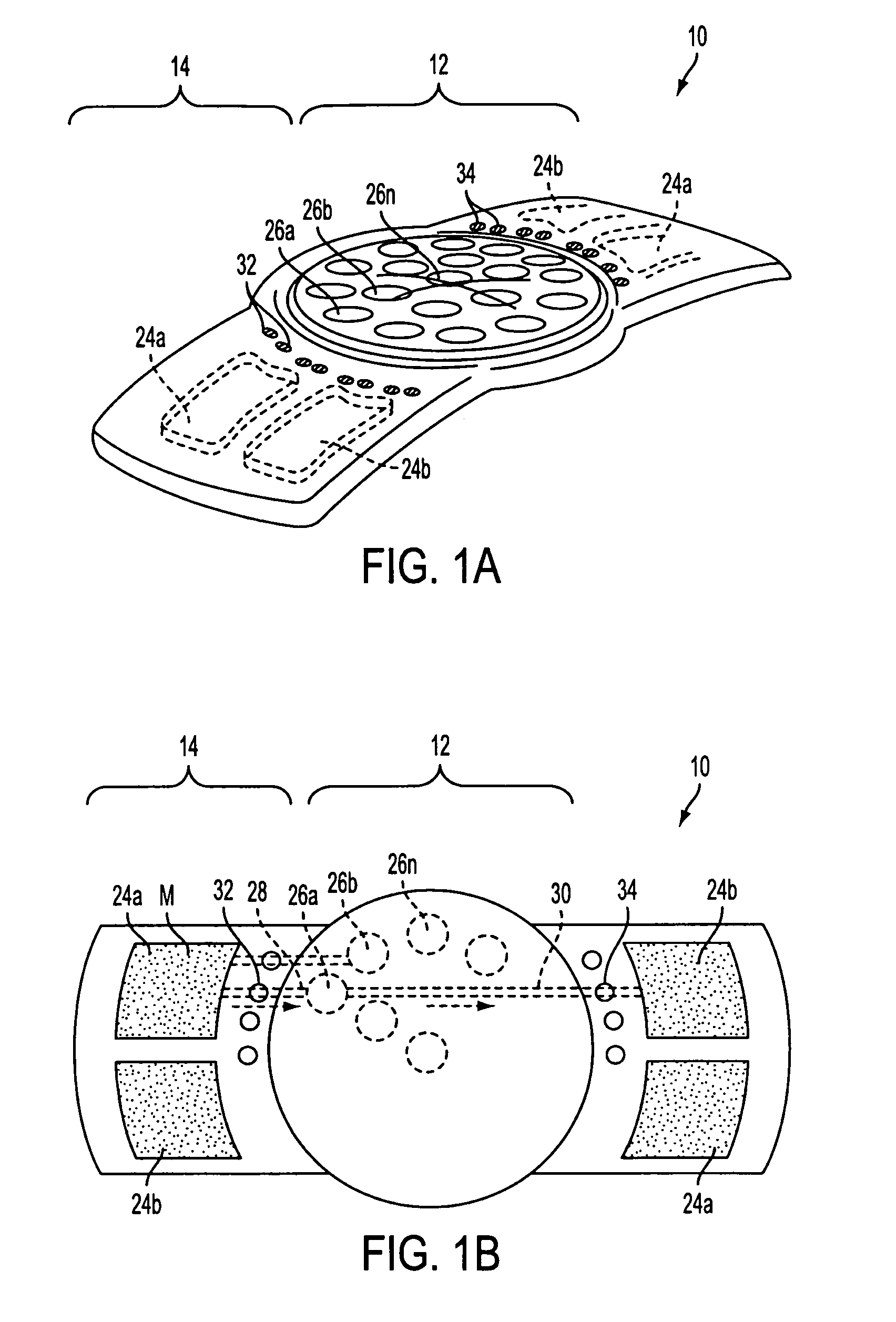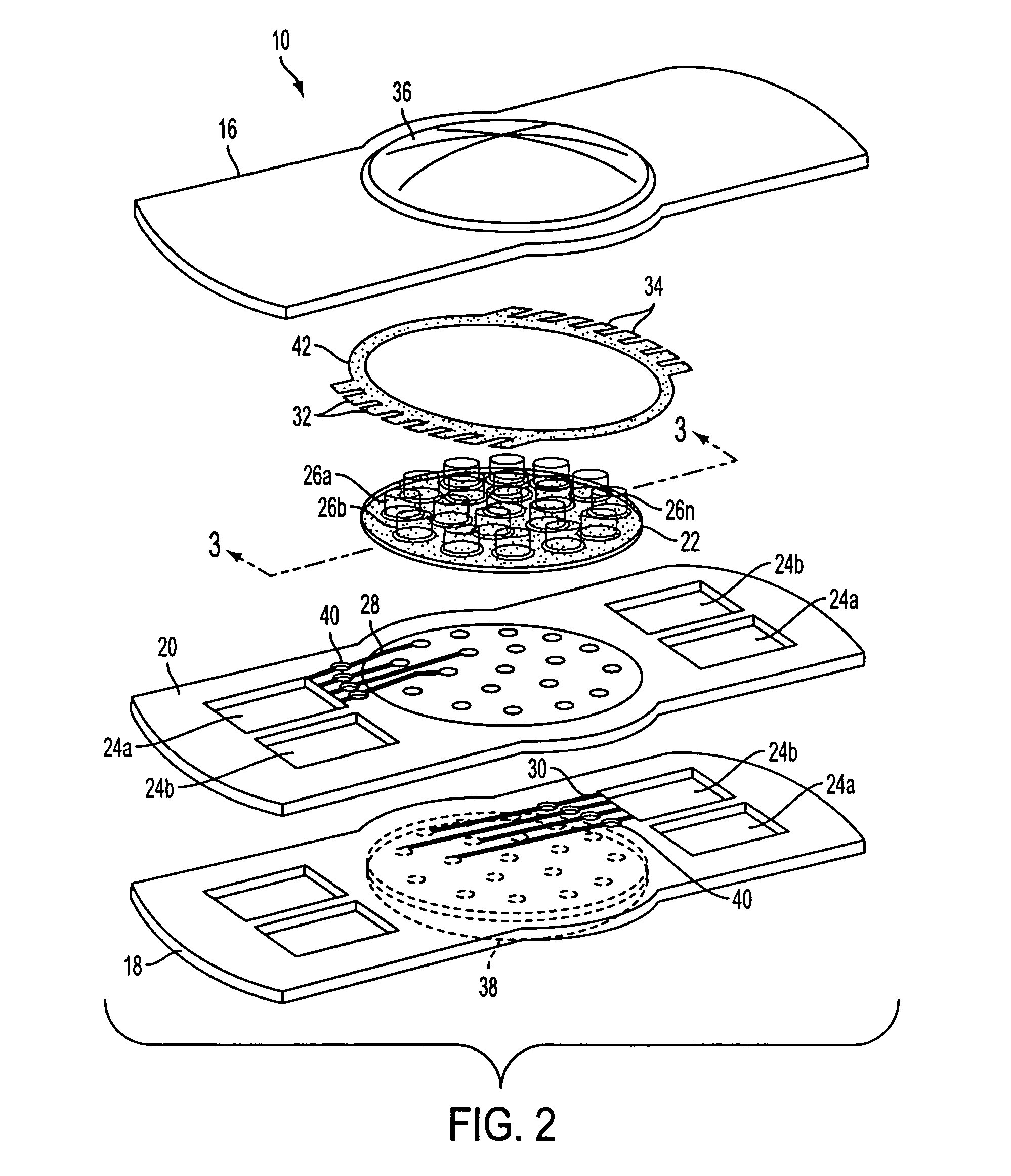Lens system and method for power adjustment using externally actuated micropumps
a technology of external actuation and power adjustment, which is applied in the field of intraocular lenses, can solve the problems of iol unable to predict refractive errors, and many patients with errors of over 1.0 diopter, so as to restore sight loss and improve visual acuity
- Summary
- Abstract
- Description
- Claims
- Application Information
AI Technical Summary
Benefits of technology
Problems solved by technology
Method used
Image
Examples
Embodiment Construction
[0033]The present invention is directed to an in-situ adjustable intraocular lens system. In accordance with the principles of the present invention, methods and apparatus are provided wherein a lens has a locally deformable surface coupled to one or more fluid-filled actuators or cells controlled by externally actuable micropumps. The volume within, and deformation of, the fluid-filled cells is controlled by selective actuation, using an external power source, of micropumps and / or relief valves coupled between the cells and one or more reservoirs.
[0034]Subsequent to implantation of the IOL and healing of the access incision, the IOL would approximate the appropriate power for the individual eye; the optical path difference (“OPD”) of the lens then may be adjusted to optimize the optical performance in-situ. As described herein below, the net effect of modifying each cell element, each and in concert, is to provide for the improvement of the optical performance of the optical system...
PUM
 Login to View More
Login to View More Abstract
Description
Claims
Application Information
 Login to View More
Login to View More - R&D
- Intellectual Property
- Life Sciences
- Materials
- Tech Scout
- Unparalleled Data Quality
- Higher Quality Content
- 60% Fewer Hallucinations
Browse by: Latest US Patents, China's latest patents, Technical Efficacy Thesaurus, Application Domain, Technology Topic, Popular Technical Reports.
© 2025 PatSnap. All rights reserved.Legal|Privacy policy|Modern Slavery Act Transparency Statement|Sitemap|About US| Contact US: help@patsnap.com



